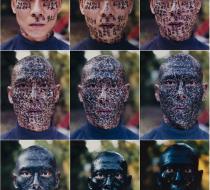Art as a Mirror: Zhang Huan’s 'Family Tree' and Its Reflections on Cultural Identity Favorite
One of the most critical artists on the contemporary art scene is Zhang Huan. His works are of great social insight and unique in how he applies his artistic expression. He thus makes them an almost visual feast with a peek into the multilevel structure of modern society. One such work is the masterpiece "Family Tree," which shows how art can mould our social cognition through multilayered symbolism and profound imagery.
This post will discuss the reflection and influence of "Family Tree" on social and cultural cognition through artistic techniques and themes. The research aims to conduct an in-depth analysis of the work so that its commentaries on modern family and societal structures are revealed and how art becomes a bridge for the interaction of ideas. The post also looks at how audiences receive and interpret these artistic messages with the likely influence of public ideologies and cultural values. Such an analysis can enable us to understand more in-depth the artistic world of Zhang Huan and the influences of art on making social cognition. From the above general background, discuss the artistic features of "Family Tree" and its multivalent impact on society and culture, as art leads societal thought into the future.
"Family Tree," created in 2001 by Zhang Huan, combined identity, the past, and culture. It represents three photographs in a sequence capturing the moment when the artist's face slowly becomes covered with ink and a script written over him. Each photo represents the stage from the relatively straightforward visage to the one obscured by text and patterns until his face is barely recognizable. In Family Tree, Zhang Huan inscribes his face with traditional Chinese calligraphy ink, and as a result, he becomes inscribed with personal and family history, common idioms, and Chinese proverbs. Besides being an evident tribute to tradition, calligraphy deeply underlines how culture and identity are woven into personal life. This provocative visual presentation of Zhang looks into the relationship between collective and individual histories and how culture can be preserved and transformed in each society that undergoes change through individual experiences and memories. Therefore, the artist is articulating a series of images, each related to the other, and as such, the possibility of change. This is why time and transformation are doubly implanted within the work. Every frame portrays the past and the future, simultaneously embodying the gradual "erosion" of the individual under the pressure of society and culture. It is not a mere exploration of identity but a comment on how to keep cultural uniqueness in a world that is increasingly global.
Symbolic Meaning
Each brush stroke on Zhang Huan's face is much more than an inscription of an idea; it is a cultural trace. In this manner, Zhang turns traditional calligraphy into a living cultural practice. The content written was not only personal history but also a shared cultural heritage. This gradual covering of his face with text is how culture stamps our identities, and these cultural marks remain deep in our lives.
Cultural Reflection
"Family Tree" is an exemplification of the fact that the creation of cultural identities is ongoing and increasing in everyday life. This shows the relationship of a person to his or her culture of origin. Therefore, Zhang's work reminds us that human beings are not just isolated individuals but beings formed by culture, history, and social forces. This piece questions the preconceived notions of its viewers regarding cultural identity and instigates thought on one's cultural roots and how those roots are reinterpreted and understood in a globalized context.
Social Critique
In "Family Tree," Zhang Huan not only touches upon questions of identity and culture but also attacks the social and cultural structure that closes its eyes to individual diversity. In that sense, as the face becomes more and more consumed by the text, viewers feel that erosion might project how an individual's sense of uniqueness and voice could be washed away within the larger society and culture.
In the light of an analytical study of Zhang Huan's "Family Tree," we perceived how art brilliantly reveals and explores cultural identity and social structures and understood the foremost role of art in the design of social cognition. Being a work of profound socio-cultural importance, "Family Tree" shows how an individual can struggle and forge his or her identity in the face of cultural heritage and societal expectations. In Zhang Huan's work, he further pushed the boundary of tradition and modernity by integrating personal history with cultural traditions into today's contemporary artistic expressions, opening new pathways to dialogue and understanding. It makes us reflect on the construction of one's identity and how art might be used as an assertive communication and expression vehicle in today's age of globalization. "Family Tree" is a reminder that an individual, bound by the strength of the cultural background and social structures, can also voice his original thoughts and ideas about his artwork. It, therefore, is one of the sites where one can reflect and criticize what is going on with the condition of society today.







